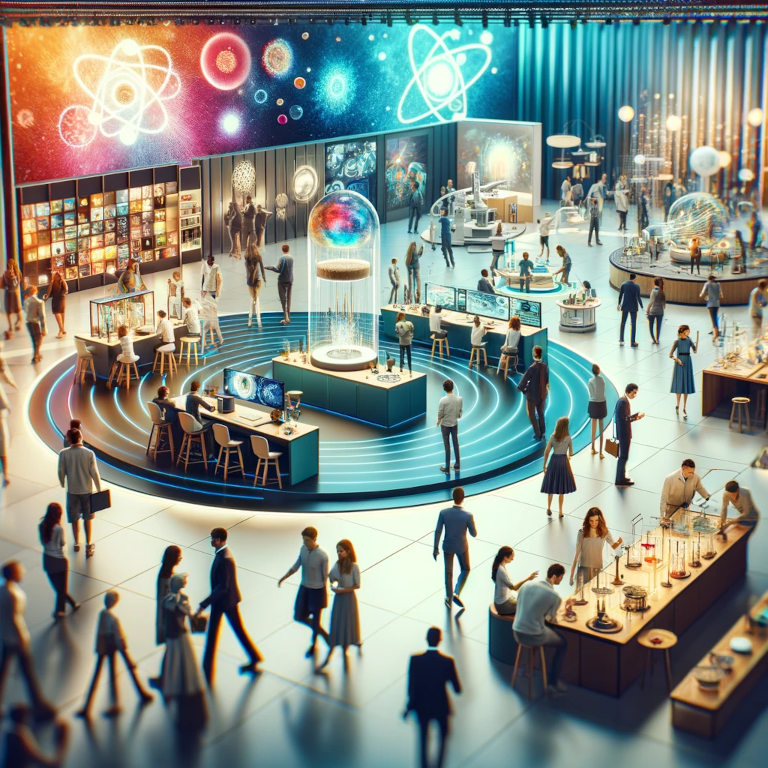Science exhibitions offer a unique intersection of education and engagement, acting as gateways that introduce individuals of all ages to the wonders of scientific discovery. Through interactive exhibits, immersive displays, and educational sessions, these events captivate the imagination and foster a deeper understanding of the world around us.
Interactive Exhibits: Engaging Minds in Learning
Interactive exhibits are the heart of any science exhibition. These installations encourage hands-on participation, allowing visitors to experience science up-close. Whether it’s through virtual reality simulations that transport users to distant galaxies, or hands-on experiments demonstrating basic principles of physics, interactive exhibits provide a dynamic learning environment that enhances understanding and retention of scientific concepts.
Educational Impact: Fostering Curiosity and Critical Thinking
Science exhibitions play a crucial role in education by making complex ideas accessible and stimulating curiosity. They offer a variety of learning experiences designed to appeal to different learning styles, including visual, auditory, and kinesthetic learners. By engaging with exhibits, visitors develop critical thinking and problem-solving skills, essential tools for academic and career success in any field.
New Technologies: Showcasing Cutting-Edge Science
A pivotal aspect of science exhibitions is their ability to showcase emerging technologies and recent scientific advancements. From the latest in sustainable energy solutions to breakthroughs in biomedical engineering, these exhibitions serve as a platform for introducing the public to the cutting-edge developments shaping our future. They not only educate but also inspire the next generation of scientists, engineers, and innovators.
Collaboration and Community Engagement
Science exhibitions also foster collaboration among scientists, educators, and the community. They provide a space for professionals to share their knowledge and enthusiasm for science with a broader audience. This interaction enhances public understanding of science and its implications for society, promoting a more informed citizenry.
Tailored Experiences for Diverse Audiences
Recognizing the diverse interests and educational levels of visitors, science exhibitions often offer tailored experiences. These can range from child-friendly sections with simplified explanations and fun activities, to more complex discussions aimed at adults and professionals. This inclusivity ensures that everyone, regardless of age or background, can find something of interest and challenge.
The Future of Science Exhibitions
Looking forward, the evolution of science exhibitions promises even greater integration of digital technology and interactive learning. Augmented reality (AR) and artificial intelligence (AI) are set to play larger roles, creating more personalized and immersive experiences that make science accessible to all.
Science exhibitions are more than just educational events; they are vibrant, engaging experiences that bring science to life. They play a critical role in educating the public, inspiring future generations, and advancing public understanding of crucial scientific issues. By continuing to evolve and adapt, science exhibitions will remain essential platforms for scientific discovery and public education.






